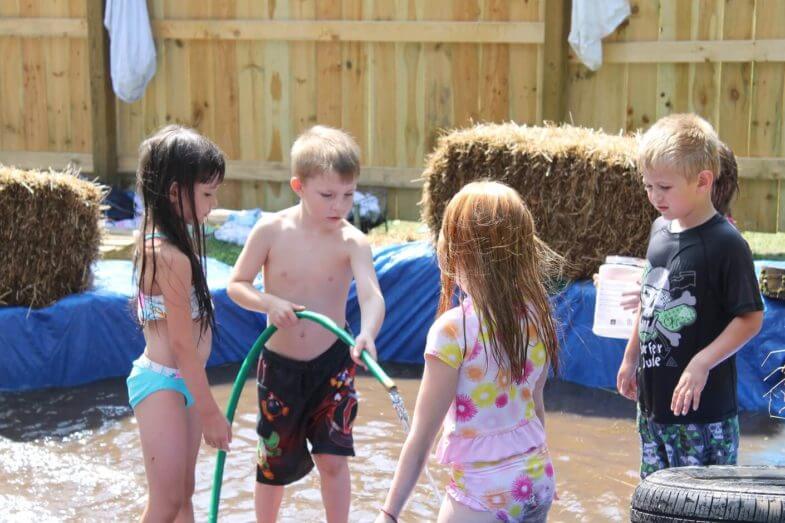
The following is a guest post by James Davis. James is a co-founder of Camp Stomping Ground, a summer camp in New York designed to help kids find lifelong friendships while also pursuing things that interest them. He’s also a part time stay at home Dad that spends a great deal of time trying to figure out how to create nutrient rich environments where a love of learning can flourish
I’m a half-time stay at home dad, and a general lover of the outdoors.
I’ve lived in ski towns, become a master gardener, and was the naturalist at the summer camp where I grew up. I also really believe in letting kids be self-directed, so much so that I started a brand new summer camp a couple of years ago to help kids learn how to be even more self-directed in their own lives.
Being a grown-up who cares about the outdoors in the digital age means one fairly scary thing – our kids now have WAY more options when it comes to spending time indoors, and the natural world where we all spent our formative years is starting to seem a little old-timey.
At camp, and at home, I’d love it if kids got outside more.
I also want them to want to go outside without me having to twist their arms. So I got to work making it so. Our solution was to make the most engaging outdoor space we could – one that would appeal to kids with all different kinds of interests.
Working off of Simon Nicholson’s Theory of Loose Parts, we try to keep a bunch of materials available in an engaging but unintimidating way. Creating an engaging outdoor space comes down to creating little pockets of wonder and exploration that speak to different interests and different moods. To that end, I’ll list the areas (and the materials needed) to create a diverse set of outdoor offerings for your kids.
Creative Space Idea #1 – Loose parts to build with.
There are two terrific things about having building materials for kids to play with outside.
- Outside is just BIGGER. There’s more room to spread out without having to worry about breaking a window or knocking over a bookshelf.
- Projects can be on-going on a nearly indefinite time horizon.
In our house, we’re huge fans of project based homeschooling.
One of the core tenets of project based homeschooling is allowing kids space to work, on an ongoing basis, on projects that pique their interests. We run into problems, though, when we need to convert the living room fort back into a couch for when the grandparents come to visit. The solution? Outside building materials!
We got old PVC piping, rope, twine, old milk crates, tarps, hay bales, parachutes, pulleys, pallets, tires, and lumber, sheets, and more, and made it clear to the kids that they had a certain area where they could build and tinker to their heart’s content. We also bring out the electric drill and assist them in building whatever they want (usually sturdier versions of the lean-tos we all built in the woods as kids). Being able to build big structures that can last on an ongoing basis has sparked a ton of creativity and ongoing world building. I’d say it’s like “real life Minecraft,” except Minecraft is just a limited digital version of this!
Creative Space Idea #2 – A place where kids can play with real tools
My favorite child development psychologist, Dr. Peter Gray, has said that children throughout the ages start learning to be adults by playing with the tools of their culture. When humans were organized in hunter-gatherer societies, children played with mock bows and swords. In the digital age, children play with electronic devices in large part because their parents model that behavior.
As adults who value spending time outdoors and raising our own food, we’ve found that it’s highly beneficial to give our kids access to the same tools we use in the yard for play and exploration. I’m not talking about dinky beach toys. I mean real shovels with sharp points, and garden rakes. As of this writing, our five year old has dug a 3 foot deep hole in our backyard in the past week or so, and all because he wants to! He’s digging so he can set up little worlds for his toys, but he’s also said he’s excited to help me turn over the soil for our raised beds next year. And guess what? He already knows how to use a shovel!
Creative Space Idea #3 – Outdoor Art Studio
In our house, the messier forms of artistic expression (like painting) too often get the short shrift inside because it’s such a procedure, especially with younger kids. That’s why we’ve moved a lot of our painting outside. We let kids just paint a fence on the property, but we’ve also invested in thin sheets of plywood ($5-$10 per good sized sheet) and let kids go to town on that. We cut wooden rounds for kids to paint, and gather large rocks when we’re digging up the garden as well. Outdoor painting lends itself to all sorts of fun that indoor painting can’t match – splatter paint, finger painting, body painting, and mixed-media painting with things like leaves and grass. We just keep paints & brushes in a little shed near a hose (for rinsing brushes), and let the kids go crazy when the mood strikes them!
Creative Space Idea #4 – Garden with fun “off the vine” foods.
If you’re a reader of Weed ‘em and Reap, chances are great that you already have a kid friendly garden. If not, though, I’d love to share what we’ve been successful with! We try to make sure we have at least one fun pick and eat option in the garden at all times – snap peas, cherry tomatoes, cucumbers, various bush and pole beans, you get the idea. We also love to ask our kids to help with harvesting “discovery” foods, like potatoes, carrots, and onions. They delight in unearthing them from the soil, and being a part of the process of turning them from plants into food.
Quick tip! We make sure to plant our garden in a location that’s “on the way” to where the kids normally play (and within sight of where we eat our meals) so they keep in regular contact with where their food is coming from. It’s amazing how a quick trip out for a cherry tomato or two can inspire an hour of outdoor fun, or impromptu weeding!
Creative Space Idea #5 – Huge sandbox with a hose.
One of the best investments we made at camp (and on a smaller scale here at home) was a 20×20 sandbox with two hoses running to it. Sand is amazing for imaginary play, and it gets doubly amazing when running water can be used in conjunction with it. At camp we were pumping water directly out of our lake (and thus right back into the water table), so waste wasn’t really a concern – and I can safely say that there are some kids who would have lived in the sandbox if we let them. As you can imagine, the pipes and other building materials made their way to the sandbox quite often!
Creative Space Idea #6 – Balls and sporting equipment
An easy one if you have sporty kids at home. We keep lawn games (bocce ball, ladder ball, bean bag toss, etc), t-ball, Frisbees, soccer balls, and just about every type of ball you can imagine available for when our kids want to get some energy out. Like building, sports are simply better outside!
Bear with me for a second! Properly made LARP (live action roleplay) swords are almost totally safe as far as preventing long term injury, and are an irreplaceable item if you’re concerned about your kids poking each other’s eyes out with sticks. Now, many people have expressed concerned that toys with violent themes will lead to kids behaving in more violent ways, but we haven’t found that to be the case at all. With proper safety training and clearly defined boundaries (no head shots!) injuries are non-existent, and we’ve found it actually helps kids learn about fair play and gentleness. More realistic looking swords have also sparked a ton of imaginary play in our family. The only concern is that your kids will start asking to go on “weapons walks” around the neighborhood, and your neighbors will dub you, as we have been, “that weird family that carries around the swords.”
Re-inspiring a love of the outdoors for your kids
We don’t have to sit idly by while playing outside becomes a thing of the past. Creating engaging outdoor spaces has been a real joy for us as adults, and for the kids we’ve worked with as well. By taking our outdoor spaces as seriously as we take our indoor spaces, we can make sure that going out to play naturally occurs to our kids as a fun and engaging option. If you have any ideas or experiences in creating fun outdoor environments, please leave them in the comments below! We’d love to add new features to our summer camp for 2016, or our very own backyard!
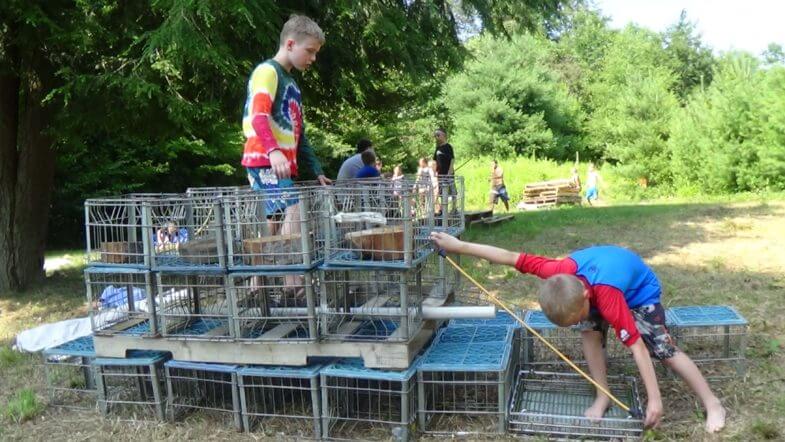
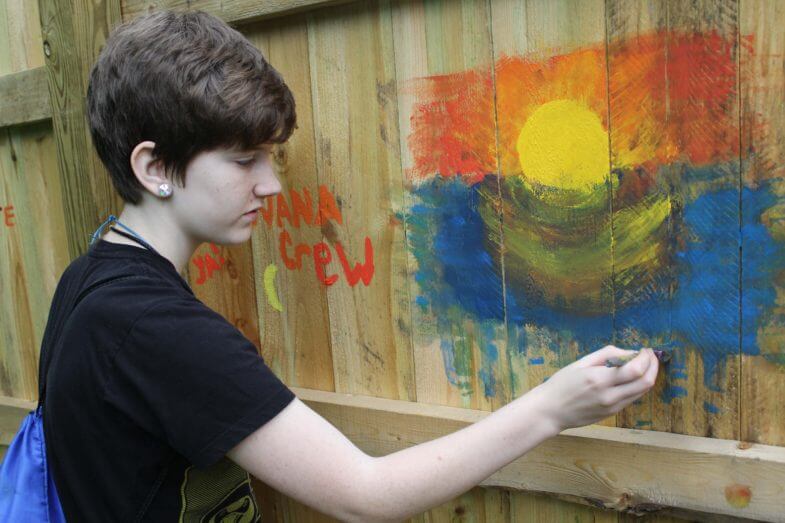
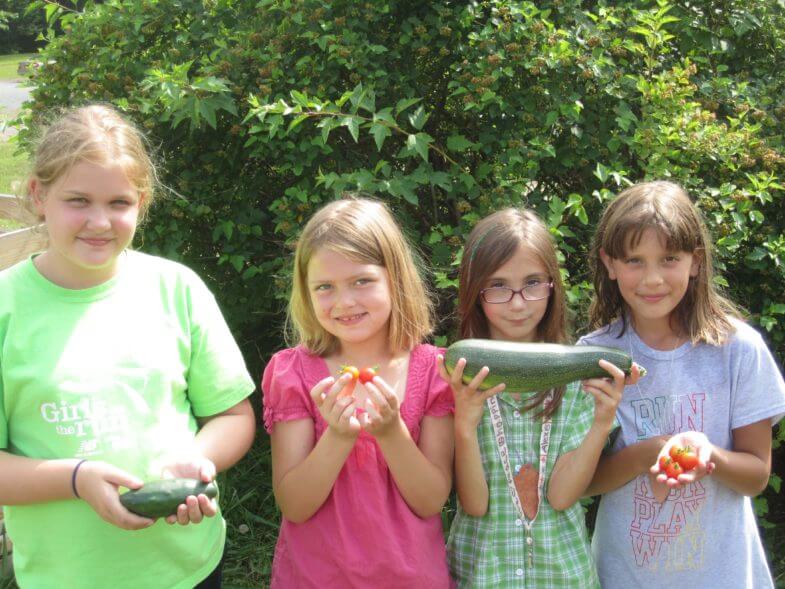
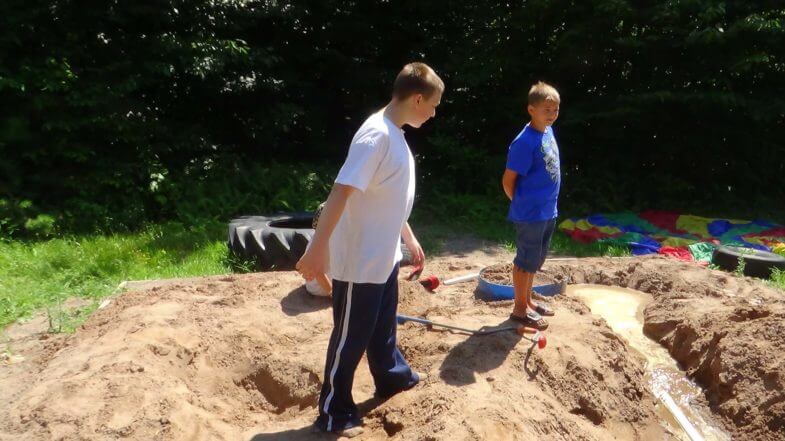
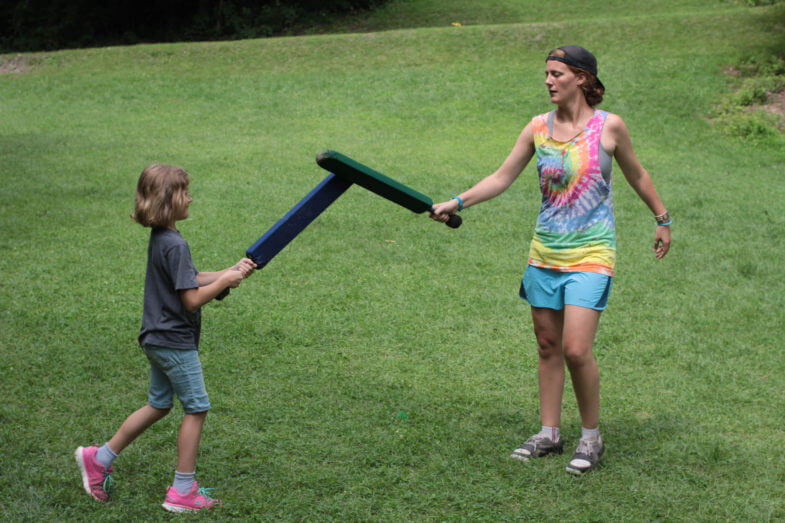
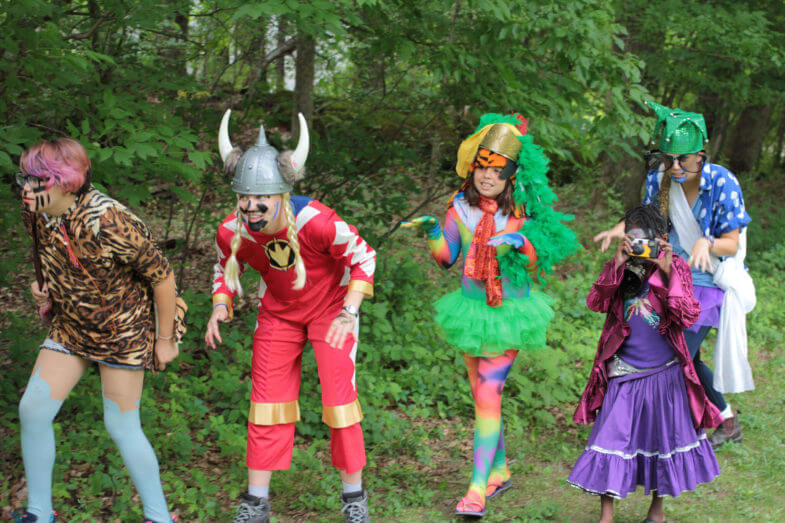
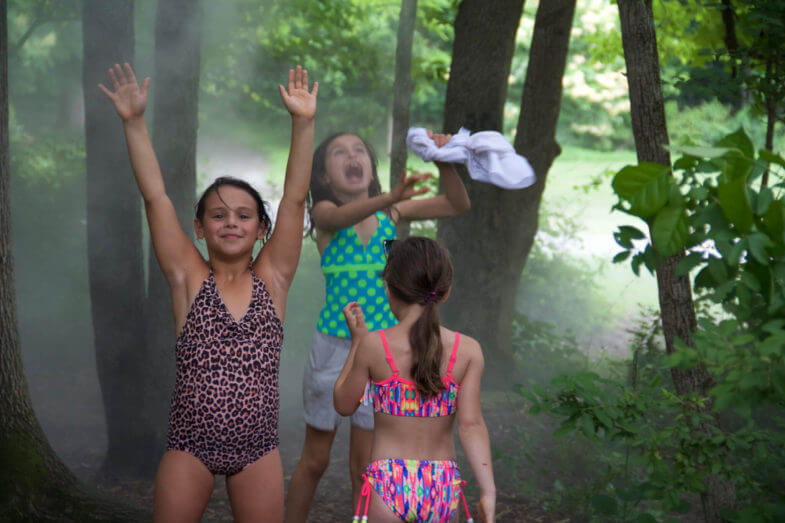
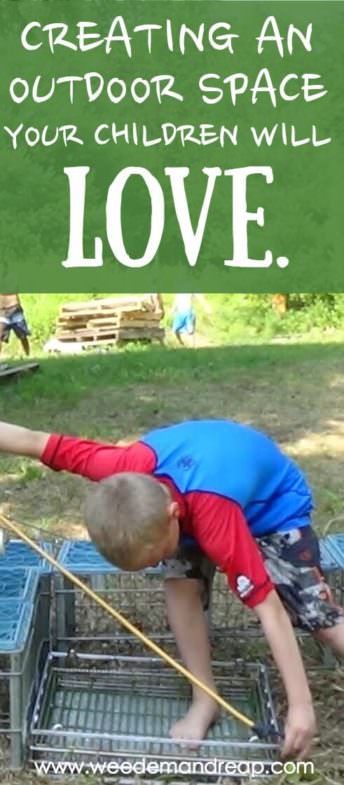

Some great ideas! Any tips on how to achieve some of these without making my yard look junky? I always have a hard time reconciling an uncluttered yard/house and allowing creative play for my kids.
Haha, that’s a good one! It’s definitely something we struggle with as well. I would suggest just designating certain areas and using large bins to be able to let the kids clean up and keep it clutter-free:)